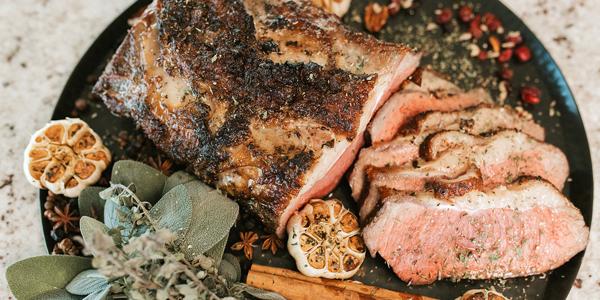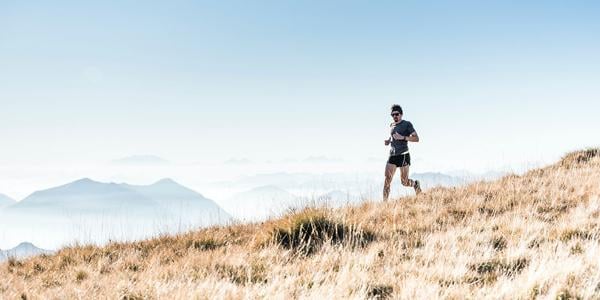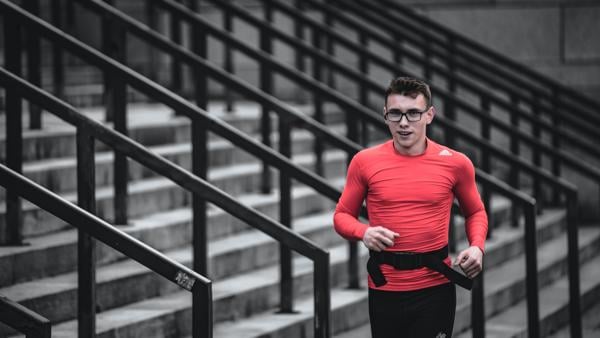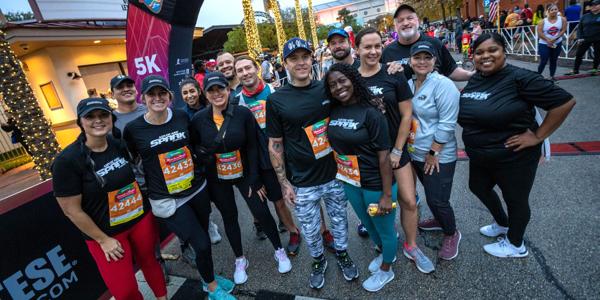Rock 'n' Roll Running Series
Have you heard an abbreviation or term that you weren’t familiar with? If someone told you they used “moleskin,” would you know what they meant, or would you back away in fear? Have you heard another walker or runner celebrate their new “PR” and wondered what that was? When someone talks about “hitting the wall,” do they mean they missed a turn on the course and ran right into a building?
I’ve put together a list of runner lingo to help make sense of this crazy language.
Someone who is not registered for a race, but joins the course and participates. Bandits are generally loathed in the racing community because they didn’t pay to get in like everyone else, plus they use the race supplies, eat the food and sometimes take the medals that participants paid for. They are also a risk factor, as race directors set up security, medals, medical staff, food and water stops based on the amount of people who are registered.
The piece of Tyvek with your race number on it. Using the four safety pins you should have gotten at packet pickup, you attach this to the front of your body on race day.
This is just as it sounds. You can get a black toenail when the toenail bed is injured. This can happen when your shoes allow your foot to slip forward in the shoe and bang against the top or sides. That pressure and impact can damage your toenail beds or create a blister under the toenail itself. The extra blood and fluid cause your toenail to separate from the toenail bed. The blood colors the toenail black. Get properly fitted shoes and lace your shoes correctly to reduce your chances of developing black toenails.
A skin protectant that helps prevent blisters, chafing (defined below) or any skin discomfort caused by friction (such as your clothing rubbing against your skin). It comes in a container that looks like deodorant and is found at running or outdoor stores.
Boston Qualifier. A race where a participant can qualify for the Boston Marathon by finishing within their age and gender time goal.
The result of clothing repeatedly rubbing on your skin (think bra strap and armpits), or your skin rubbing against itself (think inner thighs and groin), leaving annoying and painful marks on the skin. Both men and women are susceptible. To help avoid chafing, wear properly fitted clothing and use products such as Body Glide or Vaseline on your chafing areas.
Shows your actual race time from the moment you (and your race timing chip) personally pass over the starting line mat to the finish line mat.
A sectioned area at a race’s starting line, where race participants are grouped according to their expected finishing time. The fastest runners are usually in the corrals at the front, and the slowest runners and walkers are in the corrals at the back.
“Did Not Finish.” Used to describe a participant who started a race but did not cross the finish line for whatever reason.
“Did Not Start.” Used to describe someone who registered for a race but did not participate.
A slang term for low-budget, low-/no-frills races. These races are often free or a have a very low entry fee. They generally do not give out t-shirts or medals. Many times, the participants are asked to bring post-race food and/or provide their own aid on the course.
The area behind the finish line where race participants typically remove any non-disposable timing chips, receive their medals, get a bottle of water or some snacks, etc. The most important thing about a finish chute is to not stop right at the finish line but rather to keep moving through the chute. Other people are finishing behind you and may run into you if you stop.
A finisher’s time based on when the starting “gun” went off in a race. It does not account for how long it may have taken you to get to the starting line from your corral. The gun time is typically longer than the “chip time” (defined above).
Also called “bonking.” A dreaded occasion in a race when the participant feels like they are out of energy. A person’s muscle glycogen stores are depleted, leaving the participant fatigued or empty. This awful feeling is similar to what your body would feel like if you ran into a wall. Runners avoid this by properly fueling before and during a race.
A substance which forms in the muscles as a result of the incomplete breakdown of glucose. Lactic acid is associated with muscle fatigue and sore muscles.
A manner of dressing using multiple garments that are worn on top of each other, allowing for additional warmth in colder weather, and for the easy removal of outer layers when temperatures rise.
Tough, soft, cloth-like material with an adhesive pad on one side, used to either cover blisters or an area with the potential to get a blister because of the way the shoe rubs against the foot. Some runners use moleskin on “hotspots” where blisters might form if left untreated or over areas with a blister instead of a bandage.
The items you receive for paying for a race. Picked up on or before race day, it typically includes your commemorative race shirt, a race bib and a timing chip.
The place to pick up your race packet on the day before or the day of the race, usually at an expo with vendors and health information.
Personal best. Similar to PR (defined below).
Personal record. This is typically used to describe a person’s best race time for all races they have done of a certain length. Or some people might keep track of a specific race or course PR if they do the same event for many years.
Stands for “rest, ice, compression and elevation.” This may be what your coach, personal trainer or doctor recommends for treatment of most sports injuries.
The most famous marathon cheater. She crossed the finish line before all the other female runners in the 84th Boston Marathon and was initially credited as the first place female competitor but was later stripped of her title when it was discovered that she had not run the entire course.
SAG stands for “support and gear.” This vehicle serves a number of purposes. SAG wagons pick up racers who are injured, drop out, or are too slow and have missed the race’s cut-off limits. SAG wagons often also carry aid such as water and Gatorade. SAG wagons typically either patrol the course and/or follow behind the end of the pack. In addition to or instead of a SAG vehicle, some races have bikers who patrol the course and can radio a medical crew for help.
The sleeveless top commonly worn by runners and walkers.
The distance traveled in a single long step.
The act of reducing weekly and long run mileage during the final two weeks before a big race so that you will be fully recovered from previous workouts and ready for the big event.
An electronic timing chip (usually a strip). This records your start and finish times when you pass over the race’s timing mats. It is usually affixed to your race bib at packet pickup. Before the race, you remove the tag from the bib and secure it on your shoe. Avoid bending or twisting your race bib as that can damage the electronic chip.
For races when the start time temperature is colder than the actual race time, and/or for races where an athlete may have to wait for a long time outside before the race starts, athletes bring items to keep them warm until no longer needed. Athletes intentionally discard these items before or on the race course. These items can include old sweatshirts, gloves, garbage bags, ponchos, and old hats. Many athletes get these items from thrift shops. Most races pick up these discarded items and donate them to local shelters.
The front portion of a shoe.
A person who participates in a physically strenuous activity only on weekends or part-time. In marathon terms, generally this is someone who does no training or activity during the week and then does long runs or races on the weekends.
The ability of an article of clothing to move moisture away from your skin to the surface of the fabric so that it can evaporate. Unlike cotton, these synthetic fabrics are ideal for distance runners and walkers because they remain lightweight throughout a workout and do not absorb sweat, keeping you more comfortable. For long distance events, cotton is the enemy. What you want is moisture-wicking clothing.
I hope this list will help you better understand runner lingo! Do you have any to add to the list?





